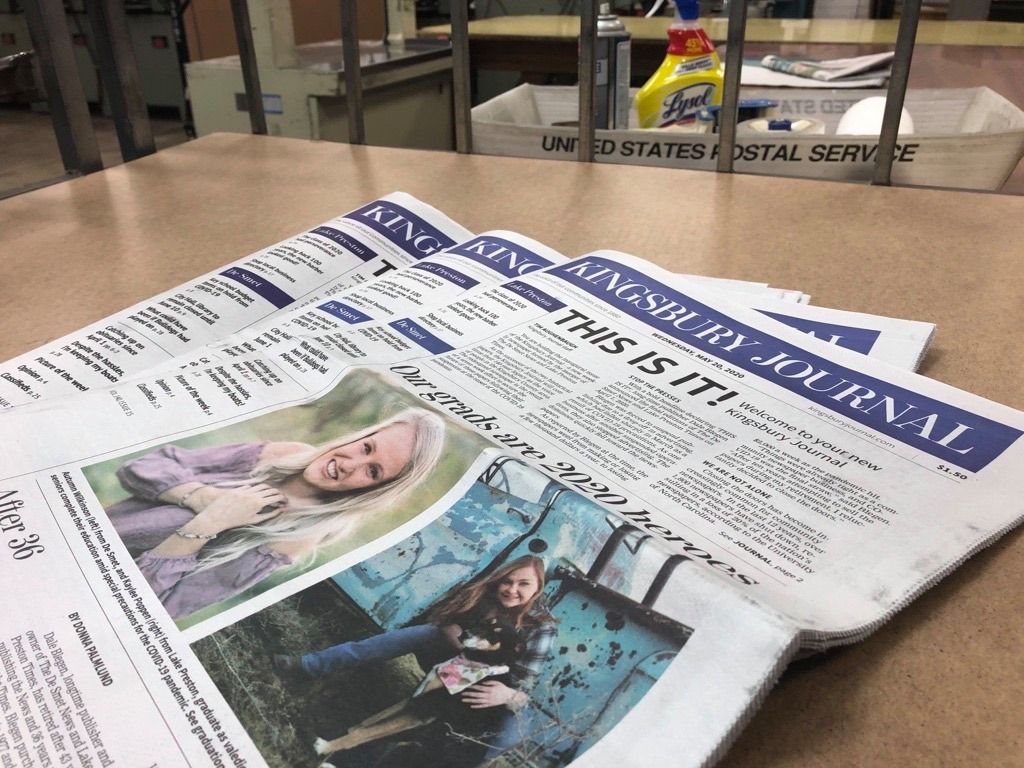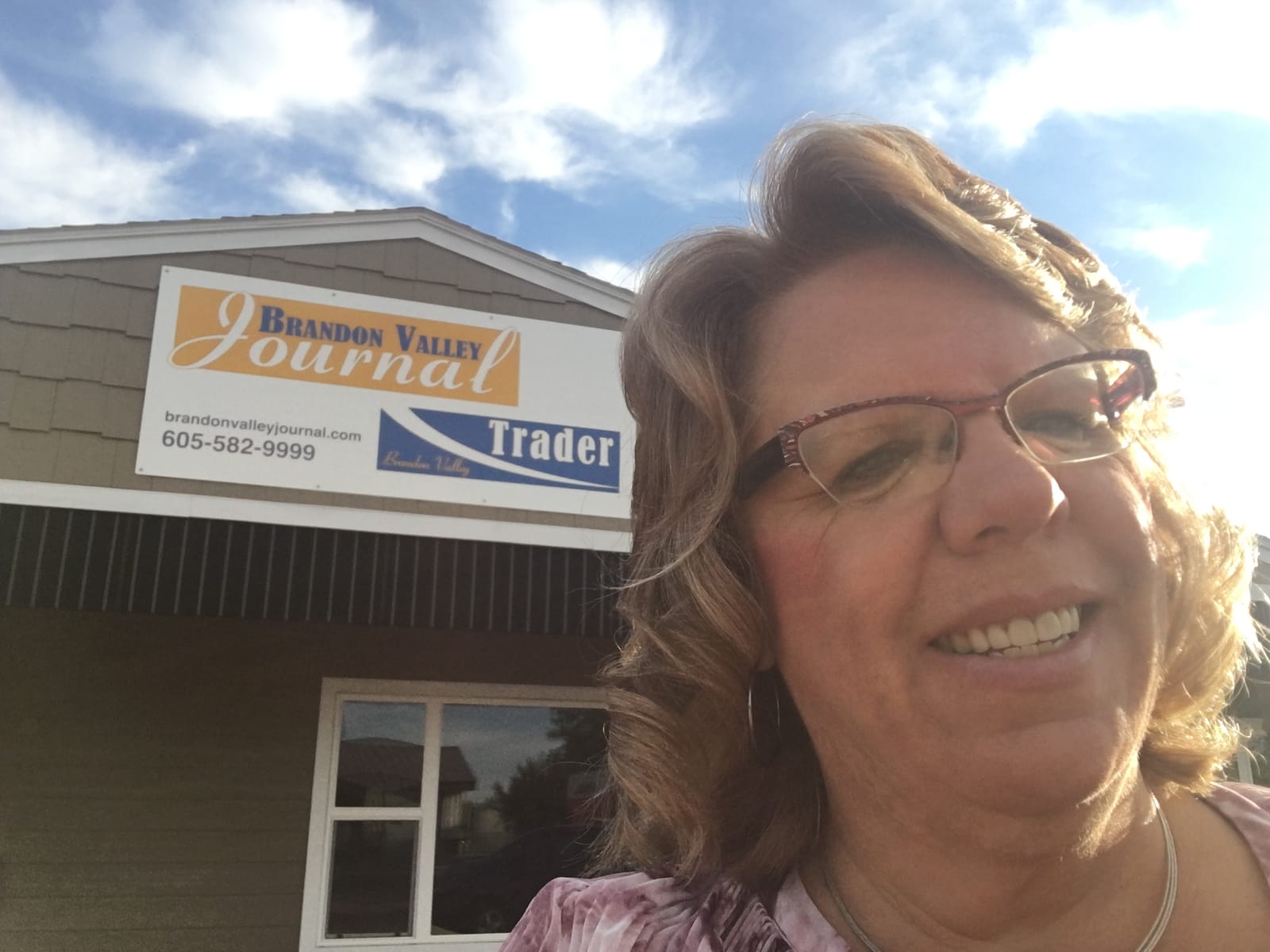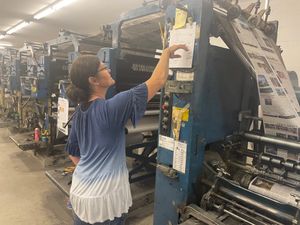One heartbreaking phone call in November 2021 sums up the depth of devotion Jill Meier and other weekly newspaper editors across South Dakota feel toward keeping their communities informed.
Meier took the call while working at the Brandon Valley Journal and learned that her 83-year-old mother had died at a hospital in Minnesota. The call came on a Monday, a day when Meier and others in the weekly news business are on deadline to get their papers ready to be printed each Tuesday.
“I had to deal with my grief a little bit, but I still had to get that paper out,” Meier, 59, recalled in an interview. “So, I still sat here and put that darn paper together, even knowing my mom was no longer with us. But that’s kind of what you do when you have this job.”
Amid all the reported doom and gloom about the decline of the newspaper industry in America, many weekly newspapers are bucking the downward trends by surviving and in many cases thriving, even as fewer people consume local news in print.
South Dakota, in particular, is a stronghold in the weekly news industry, with one of the highest per-capita rates of weekly newspaper publications in the country, according to David Bordewyk, executive director of the South Dakota Newspaper Association.
As a state with 66 counties, South Dakota has 94 weekly newspapers in operation, almost all outside the population centers of Sioux Falls, Rapid City and other urban areas.
Though they face many of the same headwinds as daily papers — including increased production and distribution costs, staffing challenges and increasing competition from digital news and advertising sources — weekly newspapers continue to be a critical source of news, information and advertising for rural residents of South Dakota.
“Their role is as important as it’s always been, maybe even more so,” Bordewyk said.
“There is a role that these newspapers play in the sustainability of their communities, whether it be economically, culturally or socially, and it’s all connected to keeping residents of those communities informed about what is going on.”
More from News Watch: Communities rally to launch S.D. weekly newspaper with volunteer labor
The past few decades have been brutal for the American newspaper industry as a whole, creating in some cases what researchers at the University of North Carolina-Chapel Hill have deemed “news deserts,” where residents do not have access to any local news source.
More than 1 in 5 newspapers in the U.S. closed in the past 15 years, and half of all journalism jobs have disappeared during that time. In the U.S., 200 counties now have no local paper, and more than 7,000 newspapers are labeled as “ghosts” of their former products due to cutbacks, according to UNC.
Data from the federal Bureau of Labor Statistics reveal the depth of the decline in the number of journalists working to gather news in South Dakota. According to the bureau, the number of journalists working in any capacity in the state fell from 490 in 2006 to 250 in 2016 to 200 in 2021.

Local newspaper key to a community’s strength
The lack of newspapers creates fundamental problems for communities because, as the university reports, “the fate of communities and the vitality of local news … are intrinsically linked.”
The research has also pointed to an increasing divide of access to news among the “haves” and “have-nots” in relation to greater difficulty of lower-income people to obtain quality local news.
Bordewyk said a local newspaper serves as a key source of cohesion in communities, especially rural areas and small towns that don’t have other media in place.
More from News Watch: Weekly newspapers in South Dakota bucking national news trend
“It’s sort of the grease in a community’s engine,” he said. “It keeps things running smoothly as a barometer of what is happening in terms of agriculture, businesses, local government, education and what’s happening in the town.”
South Dakota has 11 traditional daily newspapers, as it has for decades, but many have lost vast circulation, experienced deep staff cuts and reduced publication days. Like other states, South Dakota has seen growth in the development of non-profit news organizations, such as News Watch, and other mainly digital news outlets.

Things are turning around for some weeklies
Weekly papers, meanwhile, have seen a slower decline in the number of publications, from 128 in 1995 to 94 now.
Weekly paid circulation has also fallen by roughly half over the past four decades, from a high of about 200,000 in 1980 to 100,000 now, which equates to about 250,000 individual readers, Bordewyk said.
Like many businesses, newspapers suffered hard financial times during the COVID-19 pandemic as advertisers could not afford to spend on promotion. And production and distribution became far more challenging.
According to the Pew Research Center, 360 U.S. newspapers closed from 2019 to 2022, which came on top of 2,400 closures documented back to 2004.
In the post-pandemic era, many weekly newspapers are seeing stabilized revenues or at least slowing declines, though an inability to find staff remains a major ongoing challenge, some newspaper operators told News Watch.
One recent hit has come from rapidly rising postal rates, which have jumped by 30% over the past three years and are a big expense for publications that mostly mail papers to their subscribers.
Weekly newspapers continue to seek new revenue sources or ways to expand on secondary sources, such as increasing commercial print jobs, publishing more special sections, or partnering with community or civic groups to produce new products. Some have also installed website paywalls to push paid online subscriptions and access.
A community paper run by the community
While South Dakota has largely bucked the trend of mass newspaper closures, the state is also home to an experiment — so far successful — that could provide a new way for newspapers to survive in a challenging financial and staffing environment.
The concept, now underway in Kingsbury County, west of Brookings, uses mostly volunteer labor from within the local community to run and fill a local weekly newspaper and website with content.
When two well-established neighboring weekly papers in Lake Preston and De Smet were facing closure in 2020, a group of community members stepped in to buy, rebrand and relaunch the papers as the Kingsbury Journal, which serves the county as a whole, rather than the individual towns within it.

Other than three part-time employees, the newspaper and website are produced by unpaid volunteers within the region.
After three years in operation, the paper has 1,300 print subscribers and sees heavy and steadily increasing use of its website, both by locals and people who live out of town, said Sheryl Downes, office manager at the journal.
“It’s going well. It’s actually going excellent, and the paper is enjoyed by many people,” said Downes. “We have great subscription numbers, a great following, and the many volunteers who make our paper what it is.”
While the volunteer model continues to evolve, the normal for-profit business model for weekly papers in South Dakota remains individual or group ownership and a small staff that hustles and works long hours to keep an eye on local government, report on local schools and sports, and provides coverage and an advertising venue for local businesses.
Balance between cheerleader and watchdog
Most weekly newspapers run with skeleton staffs, often led by one person or a family that is staunchly committed to remaining financially viable and informationally relevant in their communities.
At the heart of the weekly newspaper is the editor, who sometimes works alone or with a very small staff to make news coverage choices, report articles and take photographs and complete the design of the paper and website while also serving as a community representative of the newspaper.
Bordewyk said running the editorial department of a weekly paper can be one of the trickiest jobs in journalism.
“A good newspaper editor has to maintain a balance between being the No. 1 cheerleader in a community as well as the No. 1 poker and prodder about what is right or wrong in the community. And that’s all the more difficult when you still have to live in that community,” he said.
“You don’t want to cheerlead too much, but you don’t want to poke people in the eye with a hot stick either.”
Bordewyk, who lobbies the state Legislature on behalf of daily and weekly newspapers, said the state needs a strong news media in order to prevent potential breakdowns in the social, educational and business fabric of a community.
“I would argue that a newspaper is as important to the viability and sustainability of a community as whether it got a new factory or had new jobs coming to town,” Bordewyk said. “Without that continuity that a good newspaper can provide, things can fall apart or break down in ways that are not anticipated or certainly not intended.”







